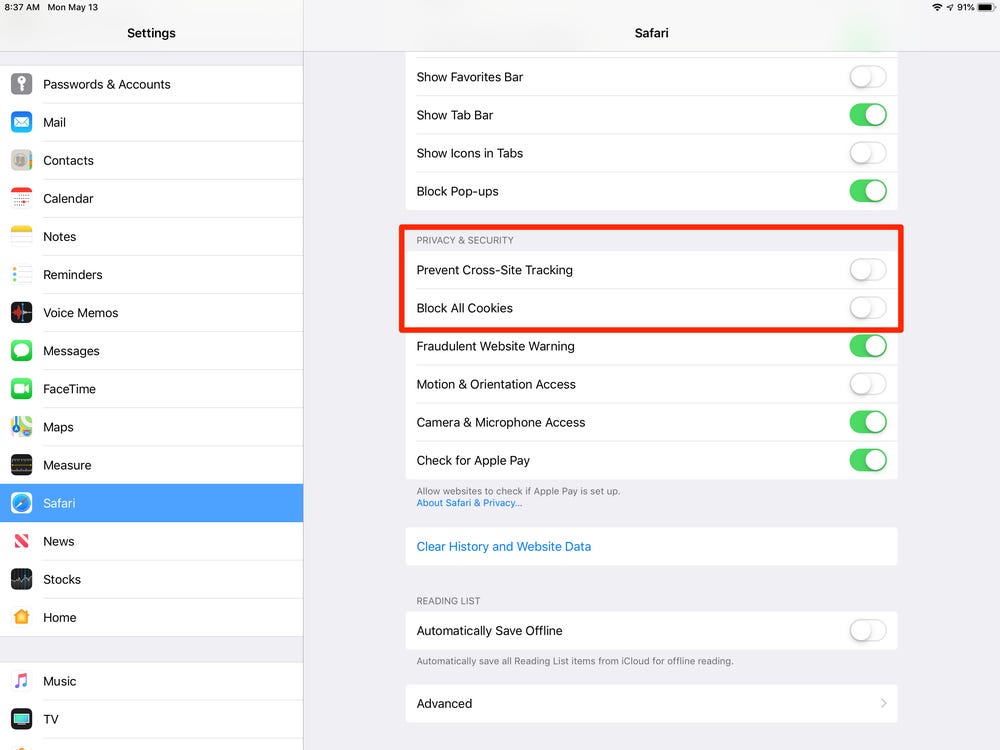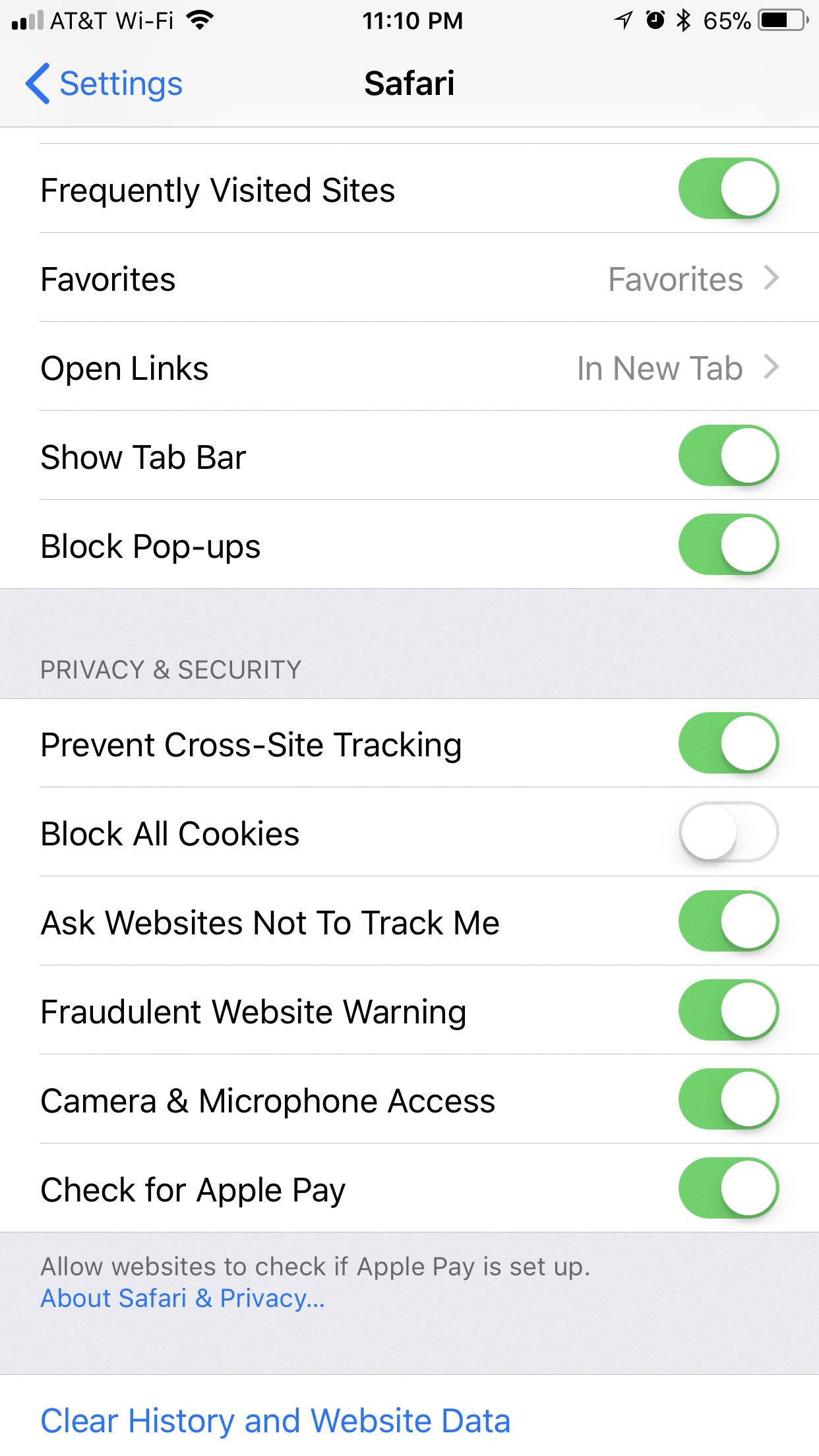Are you having trouble allowing session cookies on your iPad? Don’t worry, we’re here to help! In this blog post, we’ll cover the basics of enabling session cookies on your iPad so you can access your favorite websites wihout any issues.
First, let’s start with some background information about what session cookies are and why they are important. Session cookies are small pieces of code that are stored in your browser while you’re visiting a website. They help websites remember who you are when you visit again and enable them to provide a more personalized experience.
Now that we understand the importance of session cookies, let’s take a look at how to enable them on your iPad. For Safari users, it’s relatively straightforward: open Settings, scroll down and select Safari, then select “Block Cookies” under Privacy & Security. From there, choose either “Always Allow” or “Allow from Websites I Visit” to enable session cookies.
For Chrome users, the process is similar: open Chrome, select More at the top right corner and then Settings. Under “Privacy and security,” choose Site settings followed by Cookies. Now simply turn on the switch next to “Blocked” to enable session cookies.
Finally, if you ever need to delete history, cache and cookies from your iPad (which can be beneficial for security purposes), go to Settings > Safari > Advanced > Website Data and tap Remove All Website Data.
We hope this blog post has been helpful in guiding you through the process of enabling session cookies on your iPad! With these easy steps in mind, you’ll be able to access all your favorite websites without any problems!

Enabling Session Cookies in Chrome on iPad
To enable session cookies in Chrome on your iPad, open the Chrome app. At the bottom right, tap More (marked as tree dots) and then Settings. Tap Privacy and Security, then toggle the switch for Block third-party cookies to off. This will enable session cookies in Chrome on your iPad. To finish, tap Done at the top right of the page.
Preventing iPad from Blocking Third Party Session Cookies
To stop your iPad from blocking third-party session cookies, you need to change the settings for Safari. Here’s how:
1. Open your Settings app, and scroll down until you find the Safari app.
2. Select “Privacy & Security.”
3. Under “Block Cookies,” select either “Always Allow” or “Allow from Websites I Visit.”
4. Make sure to exit out of the Settings app afer making this change.
Now, third-party session cookies should be allowed on your iPad with Safari.
Enabling Session Cookies
To enable session cookies in your browser, you first need to ensure that cookies are enabled. To do this, open your browser and click on the settings icon (usually in the top right corner). Then select ‘Privacy and security’ from the menu. Under ‘Site Settings’, select ‘Cookies’. Here you will find a switch labelled ‘Blocked’. Make sure this switch is turned off, allowing sites to save and read cookie data.
Once cookies are enabled, you can access the settings for session cookies. Open your browser again and go to your settings page. Select ‘Privacy and security’, then ‘Site Settings’ and then ‘Cookies’. Scroll down until you find a section labelled ‘Allow from websites I visit’. Make sure that this option is active, as it will alow sites to store session cookies during your visit.
If you have any frther questions about enabling session cookies, please refer to your browser’s help pages or contact their customer service team for more detailed instructions.
Managing Cookies on an iPad
To manage cookies on your iPad, first go to Settings > Safari. Here you can toggle off ‘Prevent Cross-Site Tracking’, which will prevent third-party websites from tracking your activity across multiple sites. You can also toggle on ‘Block All Cookies’ if you wish to block all cookies from beng stored on your device. If you want to view and delete existing cookies, tap the ‘Advanced’ tab at the bottom of the page, then select ‘Website Data’. This will show all the websites that have stored data on your device. You can then select a website and delete its data by tapping ‘Remove All Website Data’ at the bottom of the screen.
Does Safari Block Session Cookies?
No, Safari does not block session cookies by default. However, you can change your Safari settings so that it always blocks or always accepts cookies and website data. To do this, open the Safari app on your Mac and go to the Settings menu. Under Privacy, deselect “Block all cookies” if you want to allow session cookies. Be aware that allowing session cookies will allow websites, third parties, and advertisers to store data on your Mac.

Source: discussions.apple.com
Unblocking Third-Party Cookies
To unblock 3rd session cookies, you will need to open your browser’s settings menu. In Chrome, for example, you can do this by clicking the More icon (three vertical dots) in the top-right corner and then selecting Settings from the drop-down menu. Once in the settings menu, select ‘Privacy and security’ from the left-hand side of the screen. Then click on ‘Cookies and other site data’. Now you sould have a few options to choose from, including ‘Allow all cookies’, ‘Block third party cookies in Incognito’, or ‘Block third-party cookies’. To unblock 3rd session cookies, you will need to select either ‘Allow all cookies’ or ‘Block third party cookies in Incognito’. Once you have selected your desired option, click on the blue Save button at the bottom of the page to save your changes.
Unlocking Third Party Session Cookies
To unlock third-party session cookies on an Android device or Chrome, you’ll need to access the settings within the Google Chrome app. First, open the Google Chrome app and click on the three dots in the right corner. Then, select “Settings” folloed by “Site settings”. Once you’ve opened the Site settings menu, select “Cookies” and turn off “Block third-party cookies” by unticking it. This should allow your device to save third-party session cookies from websites that you visit.
Troubleshooting Issues with IPad Chrome Not Loading Websites
The most likely reason that some websites are not loading on iPad Chrome is because of content and privacy restrictions. If you’ve previously enabled any content restrictions on your device, then it may prevent certain web pages from being loaded up properly. To fix this issue, try disabling the content and privacy restrictions on your iOS device by following these steps:
1. Open the Settings app on your iPhone or iPad and tap on “Screen Time”.
2. Tap on “Content & Privacy Restrictions” and toggle off the switch next to “Content & Privacy Restrictions”.
3. Enter your Screen Time passcode (if you have one set) to confirm the changs and disable content & privacy restrictions.
4. Exit out of Settings and try reloading the problematic web pages in Chrome to see if they load properly now.
Enabling Cookies on an iPad
Enabling cookies on your iPad allows web sites to store small bits of information on your device. This information includes thigs like settings, preferences, and login details that make it easier for you to access the website without having to re-enter all the details each time you visit. Enabling cookies also helps websites remember what pages and content you viewed, so they can provide more relevant content the next time you visit. By enabling cookies, your web browsing experience will be more streamlined and personalized.
Should Cookies Be Enabled on iPads?
Cookies should be enabled on your iPad for the best browsing experience. Cookies are small text files that websites store on your device to remember inormation about you, such as your preferences and login details. This helps make the web browsing experience more convenient and efficient, allowing sites to load quickly and providing a personalized experience.
Enabling cookies won’t significantly impact your security or privacy; they’re not used to store personal information or sensitive data, and they can’t be used to install malicious software on your device. If you’re concerned about tracking, you can disable third-party cookies in Safari settings; this will prevent sites from tracking you across the web without affecting the performance of websites that use first-party cookies (cookies set by the website itself).








